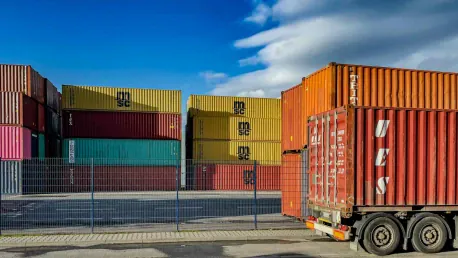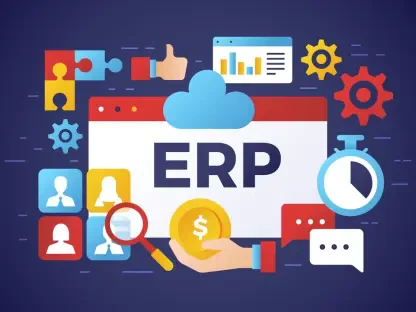What if consumer packaged goods (CPG) companies could navigate supply chain disruptions so well that customers never had to worry about products being out of stock? With the power of artificial intelligence (AI) and other emerging technologies, it’s possible to turn this dream into a reality. Supply chains are becoming increasingly complex as consumers demand more personalization. This is why businesses are investing in new technologies to improve ecosystem collaboration, manage distributed networks, and increase flexibility. In fact, 88% of CPG supply chain executives agree Generative AI will provide a competitive advantage.
1. Update Software Systems
Many CPG companies rely on legacy supply chain management systems that don’t support cloud technologies, data analysis, and interoperability. Upgrading these platforms can be very costly and take several years. However, it’s necessary for a foundation of high-quality, real-time data for AI to provide valuable and trustworthy insights. Companies cannot afford to delay adopting the latest applications to progress in their AI journey.
One global consumer goods company aimed to enhance its tech stack to gain better supply chain visibility and improve decision-making. While broader modernization efforts were underway, the company introduced AI to predict risks up to 24 months in advance, greatly enhancing efficiency and reducing the time spent on operational planning. Once the platforms are modernized, the benefits will be magnified, offering scalability and adaptability that were previously unattainable.
Updating software systems is not just about integration with AI; it also involves ensuring that these systems can handle increasing amounts of data. These modernized systems should support real-time processing and robust data exchange across all channels. This will prepare CPG companies for future challenges and opportunities, ensuring that the supply chain can respond quickly to changes and disruptions.
2. Close Data Gaps
To build an agile and profitable supply chain, CPG organizations must work to connect siloed data platforms. A seamless flow of information from every supplier, manufacturer, logistics provider, warehouse, and retailer provides a holistic understanding of operations, making better planning possible. Bridging these data gaps involves many steps, but the benefits merit the effort.
Start by conducting a data readiness assessment to evaluate the availability, completeness, and quality of key data objects. This will help to identify where to focus efforts. Creating policies for data governance ensures that standard protocols are followed consistently in different regions and markets, maintaining best practices throughout the organization. Additionally, automating data cleansing efforts reduces errors and saves time by verifying policies are followed and alerting stakeholders when issues arise.
Developing a data lake consolidates all the necessary data for the supply chain to run effectively, ready for use by various supply chain applications. This approach provides two major advantages: a foundation of accurate data supporting advanced analytics for smarter supply chain decisions, and the ability to scale. When supply chains are working well, they can support other areas of the business, creating more opportunities for growth.
3. Pinpoint Key AI Applications
When assessing AI use cases, it’s important to get support from operational, technological, and AI experts to consider factors like value to the business, feasibility, cost, and ROI. Typical use cases in supply chains include demand forecasting, inventory optimization, supply chain visibility, and trade and promotion optimization. Identifying priority use cases ensures that efforts are concentrated on the areas with the most significant potential impact.
For example, a prominent company with 225 production centers worldwide, including third-party sites, chose to focus its AI efforts on decreasing inventory levels, reducing obsolescence, and improving supply chain visibility. In a single year, this resulted in a 50% improvement in forecast accuracy and reduced inventory and obsolescence by 25% and 30%, respectively.
Smaller companies that are AI-first can build systems incorporating generative AI from the outset, scaling more easily as a result. However, large businesses face a different scenario. Well-established CPG enterprises have a broader range of operations with greater intricacy and thus need to be strategic about launching their AI journey, focusing on speed to value.
4. Empower Your Workforce
Creating a safe environment for employees is critical when implementing new technologies. If productivity becomes the primary driver for AI initiatives, employees might feel their jobs are at risk. This fear can hinder the adoption of new technology. Instead, CPG companies should emphasize growth, performance, service improvements, and the potential for delivering sophisticated and personalized services as the main reasons for adopting AI in the supply chain.
Although AI is a powerful tool, considering the human element at the center is crucial. Upskilling employees to work with AI is vital. Training empowers employees to build and maintain AI applications, provide functional specifications for new AI use cases, use the technology, and validate outputs to fine-tune the models. This not only enhances the technology’s effectiveness but also ensures that employees remain an integral part of the company’s evolution.
A successful integration of AI involves collaboration and ongoing learning. Employees should have opportunities for continuous education around AI technologies, keeping them engaged and prepared for upcoming changes. This fosters a culture of innovation and adaptability, laying the groundwork for sustainable growth.
5. Begin with Small Steps
The steps outlined so far require considerable time, resources, and preparation for successful implementation, yet they need not be overwhelming. Start by considering what’s feasible based on the organization’s maturity, operating model, and overall change readiness. Even slight improvements can provide benefits that will fund further implementations of generative AI and other technologies.
It’s important to remember that relying solely on internal resources isn’t necessary. Partnering with an expert who has both AI proficiency and a strong grasp of CPG supply chains can expedite progress, leading to agile supply chains much faster.
A phased approach, starting with small, manageable projects, allows companies to see early successes. These initial wins build momentum and justify further investment, creating a positive cycle of innovation and returns. This approach ensures adaptability and continuous improvement, tackling more significant challenges progressively.
The Path Forward
Imagine if consumer packaged goods (CPG) companies could handle supply chain disruptions so smoothly that customers never had to worry about products being out of stock. With the capabilities of artificial intelligence (AI) and other emerging technologies, this vision can become a reality. As consumer demands for personalized products grow, supply chains are getting more complex. Consequently, businesses are investing in new technologies to enhance ecosystem collaboration, manage widespread networks, and boost flexibility. This investment is not just for show—88% of CPG supply chain executives agree that Generative AI will provide a significant edge in the competitive landscape. These advancements promise to revolutionize how CPG companies operate, ensuring steady product availability and improved customer satisfaction. The future of supply chain management lies in leveraging AI to predict, adapt, and efficiently meet consumer needs while maintaining robust operations.









